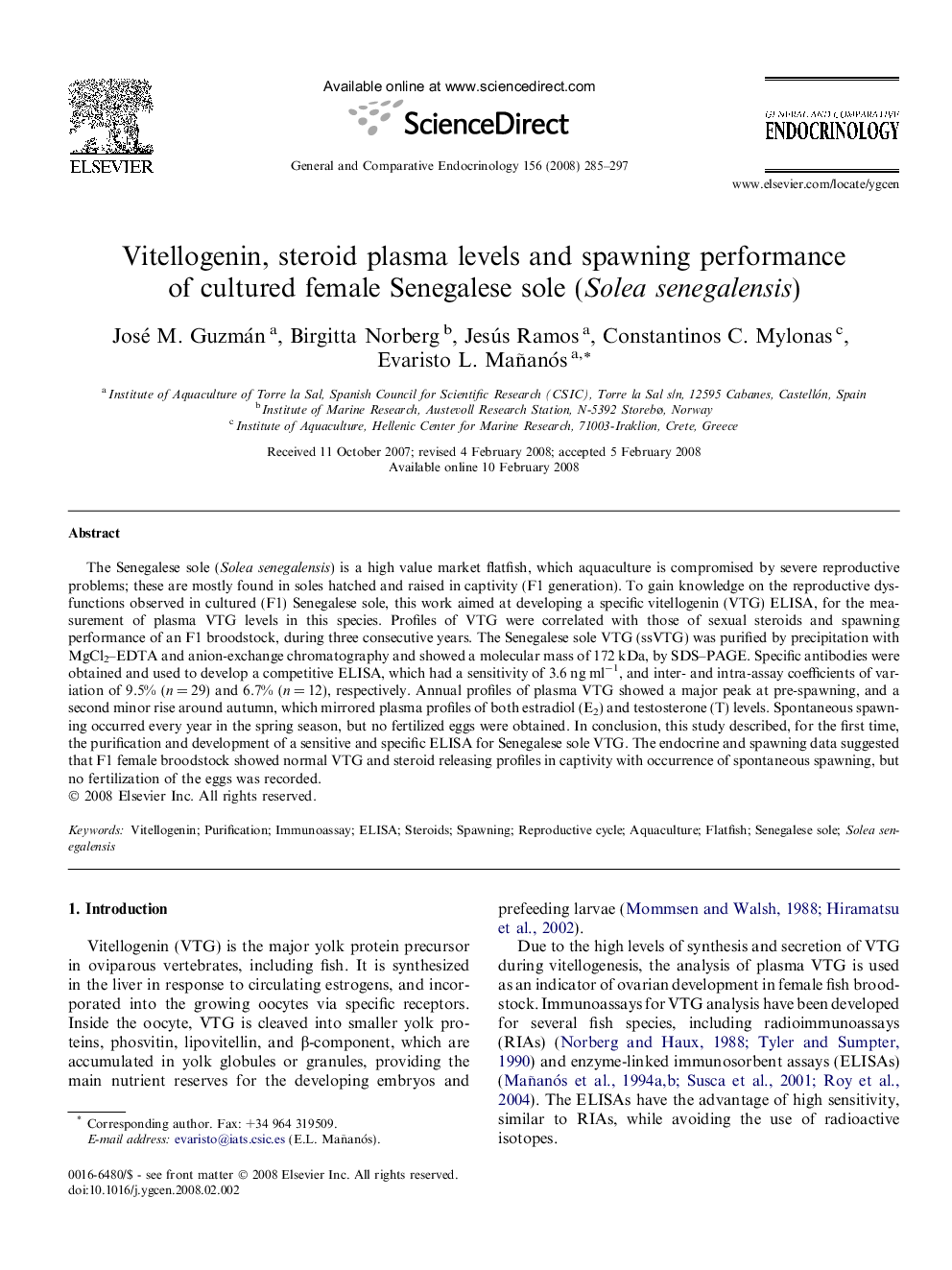| Article ID | Journal | Published Year | Pages | File Type |
|---|---|---|---|---|
| 2801646 | General and Comparative Endocrinology | 2008 | 13 Pages |
The Senegalese sole (Solea senegalensis) is a high value market flatfish, which aquaculture is compromised by severe reproductive problems; these are mostly found in soles hatched and raised in captivity (F1 generation). To gain knowledge on the reproductive dysfunctions observed in cultured (F1) Senegalese sole, this work aimed at developing a specific vitellogenin (VTG) ELISA, for the measurement of plasma VTG levels in this species. Profiles of VTG were correlated with those of sexual steroids and spawning performance of an F1 broodstock, during three consecutive years. The Senegalese sole VTG (ssVTG) was purified by precipitation with MgCl2–EDTA and anion-exchange chromatography and showed a molecular mass of 172 kDa, by SDS–PAGE. Specific antibodies were obtained and used to develop a competitive ELISA, which had a sensitivity of 3.6 ng ml−1, and inter- and intra-assay coefficients of variation of 9.5% (n = 29) and 6.7% (n = 12), respectively. Annual profiles of plasma VTG showed a major peak at pre-spawning, and a second minor rise around autumn, which mirrored plasma profiles of both estradiol (E2) and testosterone (T) levels. Spontaneous spawning occurred every year in the spring season, but no fertilized eggs were obtained. In conclusion, this study described, for the first time, the purification and development of a sensitive and specific ELISA for Senegalese sole VTG. The endocrine and spawning data suggested that F1 female broodstock showed normal VTG and steroid releasing profiles in captivity with occurrence of spontaneous spawning, but no fertilization of the eggs was recorded.
